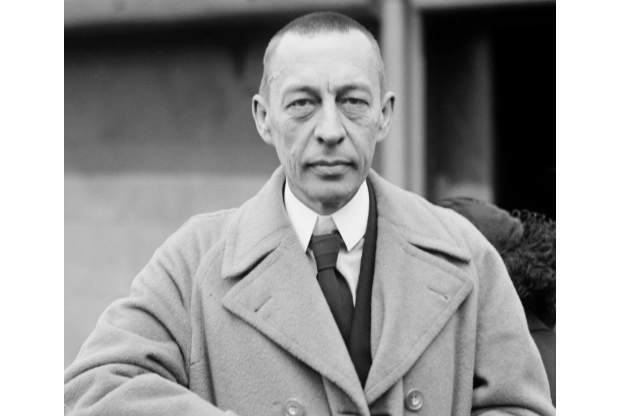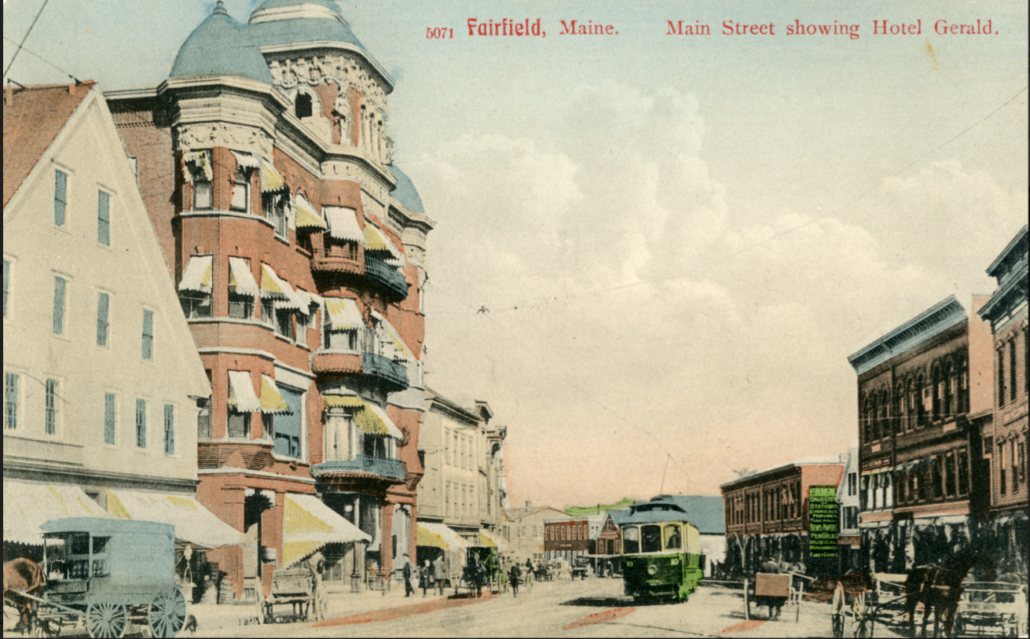Whitefield Lions to donate art supplies
/0 Comments/in Chelsea, Community, Jefferson, Whitefield, Windsor/by Website EditorThe Whitefield Lions Club will be donating to the local school’s art departments this fall. Due to Covid-19 the WLC was not able to conduct their annual Peace Poster Contest held every October. Every year each of the schools which include Windsor, Jefferson, Whitefield and Chelsea Elementary participates in the contest through their art department. The selected winners come to the club house with their parents and display their art work. A winner is chosen to go on to the district competition. Since the Lion’s Club was not able to hold its competition, they agreed they would contribute to each of the schools art departments hoping to resume the Peace Poster Contest next year.
Branch Mills Grange to host chicken & dumpling drive-up
/0 Comments/in China, Events, Palermo/by Website Editor The Branch Mills Grange will host a chicken and dumplings and pie drive-up on Saturday, October 17, from 4 – 6 p.m., for $7 per serving. Pre-orders (optional) can be place from October 10 – 16, at 5 p.m., by calling Grange Master Ann Bako and (207) 445-2707. The grange is located on Branch Mills Rd., at the China/Palermo line.
The Branch Mills Grange will host a chicken and dumplings and pie drive-up on Saturday, October 17, from 4 – 6 p.m., for $7 per serving. Pre-orders (optional) can be place from October 10 – 16, at 5 p.m., by calling Grange Master Ann Bako and (207) 445-2707. The grange is located on Branch Mills Rd., at the China/Palermo line.
I’M JUST CURIOUS: Some silly thoughts
/0 Comments/in I’m Just Curious/by Debbie Walker
 by Debbie Walker
by Debbie Walker
I have been reading again (or still)! Hope you don’t mind. The first one is titled Thee Onderful Werld ov Wirds. The best I can do for the name of the author is it came from a little book titled Moments for Grandparents, from Robert Strand. I hope it makes you smile. (Figure out the title yet)
I take it you already know of tough and bough and cough and dough. Others may stumble, but not you, on hiccough, thorough, lough and through.
Beware of heard, a dreadful word. That looks like beard and sounds like bird.
And dead … it is said like bed, not bead. For goodness sake, don’t call it deed.
Watch out for meat and great and threat: they rhyme with suite and straight and debt.
A moth is not a moth in mother, nor both in bother, broth in brother.
And here is not a match for there, nor dear and fear and pear and bear.
And then there’s dose and rose and lose… just look them up… and goose and choose, and cork and work, and card and ward, and font and front, and word and sword, and do and go, then thwart and cart. Come, come I’ve hardly made a start.
There’s also click and clique, and grove and glove, and hope and soap, and move and love: there’s sane and seine, and soup and soul, there’s lean and lien, and fowl and bowl.
How about pear and pair and pare? There is also fear and fair and fare.
A dreadful language? Man alive… I’d mastered it when I was five.
THAT IS THE FIRST HALF, the second half has a little different spin on it. I will put that in for the following week.
The second read is a poem I found; I have no idea how many years ago now, but I can tell you the paper I copied it down on is now quite yellowed. Read it and try to still think of me with kindness!
NOT YET
Winter, Don’t descend on me;
I am not ready yet.
The mittens, boots, and woolen socks
Are placed where I forget.
The sleds are piled behind the bikes,
The runners red with rust.
The shovel’s somewhere in the garage
Buried deep in dust.
Winter, don’t descend on me,
Your cold and blowing snow
Keeps whipping through my muddled mind —
Where did the summer go?
I am just curious where your thoughts wander as winter approaches. Let me know at DebbieWalker@townline.org. I’ll be waiting! Have a great week! Thanks again for reading!
REVIEW POTPOURRI: Rachmaninoff’s 2nd Symphony
/0 Comments/in Review Potpourri/by Peter Cates by Peter Cates
by Peter Cates
Rachmaninoff’s 2nd Symphony
After the failure of his 1st Symphony in 1897, Russian composer Sergei Rachmaninoff (1873-1943) had a nervous breakdown that lasted three years, with a loss of confidence in himself as a composer. Relief finally came when he submitted to three months of hypnosis under the supervision of Dr. Nicolai Dahl. His revived creative juices brought the hugely successful 2nd Piano Concerto.
In 1904, he assumed the position of conductor at the Bolshoi Opera House. However 1905 brought increased waves of revolutionary activities in Russia following the massacre by Czarist troops of many protesters at the Winter Palace in St. Petersburg; Rachmaninoff himself cared little about politics and found the unrest distracting to his work .
He resigned from the Bolshoi in 1906 after starting work on his 2nd Symphony and moved himself and his family to Dresden, Germany, for four years, while spending summers at his in-laws’ estate in Ivanovka, Russia (that estate was 3,500 miles east of Dresden and made for a long railway round trip.). Both Dresden and Ivanovka gave the peace he needed to compose several works, such as the Isle of the Dead, his 3rd Piano Concerto and the 1st Piano Sonata. But his need to support his family necessitated a concert tour of the United States in 1909 and a prolonged separation from his wife.
The 2nd Symphony was a huge success at its 1908 world premiere in St. Petersburg and a boon to his self-esteem. It is almost 60 minutes and was often performed with cuts until 50 years ago when the complete score became the norm. As the composer did with the 2nd Piano Concerto, he poured his emotions into the Symphony and created a masterfully developed panorama of delectable melody.
It consists of four movements – the soaring Largo/Allegro moderato, a rip-roaring Scherzo, the sweet Adagio and the triumphant Allegro vivace. My first experience of it occurred during my high school sophomore year when I heard the 1959 Columbia LP of Eugene Ormandy and the Philadelphia Orchestra (It was the Philadelphia Orchestra that gave the U.S. premiere of the symphony under the composer’s direction during his 1909 American tour and, during the ‘20s and ‘30s, Rachmaninoff recorded several works with the Orchestra as pianist with his friends, former Music Directors Leopold Stokowski and Stokowski’s successor, Eugene Ormandy, of the four Piano Concertos and Paganini Rhapsody and himself conducted 78 record sets of his 3rd Symphony and Isle of the Dead.)
A YouTube video of a 1979 performance with Ormandy, then 80, and the Philadelphians is one of the most captivating examples of a great conductor at work. Ormandy left two other recordings of the symphony, one from the early 1930s with the Minneapolis Orchestra and a 1973 one. Other distinguished ones from as early as 1928 through recent years are those of another close friend of the composer Nicolai Sokoloff, Artur Rodzinski, Dimitri Mitropoulos, Alfred Wallenstein, Kurt Sanderling, William Steinberg, Andre Previn, Yuri Temirkanov, Paul Kletzki, Gennady Rozhdestvensky, Leonard Slatkin, Simon Rattle, Alexander Gibson, Walter Weller, Lorin Maazel, James Loughran, Adrian Boult,Vladimir Ashkenazy, Edo De Waart, Tadaaki Otaka, Yevgeni Svetlanov, Andrew Litton, Mariss Jansons, Antonio Pappano, etc., the symphony being music that generates conductors’ best efforts.
Despite his extraordinary gifts as a pianist and conductor, Rachmaninoff was happiest when engaged in composition.
Up and down the Kennebec Valley: Trolleys
/0 Comments/in Benton, Central ME, China, Fairfield, Local History, Maine History, Vassalboro/by Mary Growby Mary Grow
Not long after finishing the piece about street railways that appeared in The Town Line, Sept. 10, this writer came across a small paperback book published in 1955. Written by O. R. (Osmond Richard) Cummings, it is titled Toonervilles of Maine, the Pine Tree State.
(The title refers to Fontaine Fox’s comic strip called Toonerville Folks that Wikipedia says first appeared in the Chicago Post in 1908 and last appeared in 1955. Toonerville was a suburban community with an assortment of oddball characters. One was Terrible-Tempered Mister Bang, who drove the Toonerville Trolley that met all the trains, Wikipedia explains.)
Additionally, the Connecticut Valley Chapter of the National Railway Historical Society’s April-December 1965 Transportation Bulletin, available on line, includes a well-illustrated article Cummings wrote about the Waterville & Fairfield and other area street railways. Cummings and the Fairfield history both have information on trolleys in Fairfield, but they do not always agree. Cummings’ work is much more detailed, with information from multiple historical records.
The Waterville & Fairfield Railroad, which was initially powered by horses, is described in both books. Cummings wrote that it was incorporated on Feb. 24, 1887, and authorized to run horse-drawn cars the three and a third miles from Waterville to Fairfield. With $20,000 in bond sales and $20,000 borrowed, Amos F. Gerald, of Fairfield, and the other organizers acquired four cars and six horses. They oversaw the laying of tracks along the west side of the Kennebec roughly where College Avenue now runs and construction of a wooden carhouse for the cars and stable for the horses in Fairfield.
One online photo shows an elaborate open passenger car, rather precariously balanced on two sets of small wheels under its middle third, drawn by two white horses. Two women in floor-length skirts stand on the sidewalk in front of a row of large-windowed two-story brick buildings on Main Street, in Fairfield. The car is identified as Horse Car No. 1, and the estimated date is opening day, June 23, 1888 (the Fairfield historians wrote that service began June 24, 1888).
Cummings said the open cars had eight benches and could accommodate 40 passengers. Another photo shows a closed car outside the Fairfield carhouse; the closed cars had space for 20 passengers, according to the text.
The railway soon had 24 horses. The Railroad Commissioners’ 1889 report, quoted by Cummings, said the horses “are well fed and kindly treated.”
The Waterville & Fairfield was well-patronized, Cummings wrote, carrying almost 95,000 passengers between its June 1888 opening and Sept. 30 that year. In its first full year, Sept. 30, 1888, to Sept. 30, 1889, there were 232,684 passengers, and despite having to buy snow-moving equipment and repair tracks in the spring, the line made a profit: $657, of which stockholders got $600 as dividends.
The next two years saw deficits almost $1,400. Nonetheless, early in 1891 two things happened indicating the railway was considered a going concern.
First, Cummings wrote, Gerald and other local men organized the Waterville & Fairfield Railway & Light Company, chartered by the Maine legislature on Feb. 12 and approved to buy the Waterville & Fairfield and two electric companies, in Waterville and Fairfield. The two railway companies became one on July 1, 1891.
The second event was that on March 4, the legislature authorized the Waterville & Fairfield to build a line through Winslow to North Vassalboro and to become an electric railroad.
The next year, horses were replaced by electricity, a conversion that involved adding poles and overhead wires, large generators at both ends of the line and new equipment in the cars. The first electric cars ran July 20, 1892. Cummings wrote that residents were excited and every car was full on opening day.
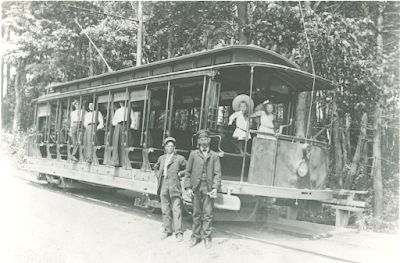
13-bench open car #11 of the Waterville, Fairfield & Oakland Railway, with conductor William McAuley, standing left, and motorman John Carl, on Grove St., in Waterville, near Pine Grove Cemetery.
The Waterville & Fairfield was the first of several street railways serving the area from the late 19th century well into the 20th century. Another that the Fairfield history describes was the Benton & Benton Falls Electric Railroad. It opened Dec. 7, 1898, and extended its tracks to Fairfield in July 1900. Cummings wrote about the Benton & Fairfield Railway, which had been operating a shorter line before it connected Benton to Fairfield in 1901. (The writer suspects the two were the same, perhaps going by slightly different names and owners’ names at different times.)
The Benton & Fairfield, Cummings wrote, was owned by Kennebec Fibre Company and served primarily to carry pulpwood delivered on Maine Central freight cars to Benton and Fairfield paper mills. Its first three miles of track, all in Benton, opened Dec. 7, 1898. Extensions in 1899 and 1900 brought the line across the Kennebec to Fairfield and increased mileage to a little over four miles.
Cummings wrote that the railroad made a profit in only nine of its 32 or so years, and state railway commissioners were frequently dissatisfied with its maintenance. What little passenger service was offered ended in 1928, and the railroad went out of business around 1930, Cummings found.
The Fairfield & Shawmut connected those two villages in 1906 (Fairfield history) or October 1907 (Cummings). Amos Gerald was among its founders. It was primarily intended to serve passengers; Cummings wrote that its schedules were designed to let people transfer to the Waterville & Fairfield. The fare was five cents; the three-mile trip took 15 minutes, and cars ran every half hour.
The line, a little more than three miles long, served Keyes Fibre Company near Shawmut and Central Maine Sanatorium on Mountain Avenue between downtown Fairfield and Shawmut. There was a waiting room for sanatorium visitors at the foot of the avenue, Cummings wrote.
Like the other electric railroads Cummings described, the Fairfield & Shawmut was partly built with borrowed money — $30,000, in this case. Cum—mings wrote that when the 20-year bonds came due July 1, 1927, there wasn’t enough money to redeem them. The bondholders chose a receiver who got approval to abandon the railroad; the last trolleys ran July 23, 1927.
The Waterville & Fairfield met the lines from Benton and from Shawmut in Fairfield, and provided electricity for both.
As the Waterville & Fairfield grew, local businessmen formed the Waterville & Oakland Street Railway. (Yes, one was Amos F. Gerald, and Cummings lists him as the railway’s first general manager.) It was chartered in 1902, despite opposition from the Maine Central Railroad that also connected the two towns. Construction began in April 1903; the line from downtown Waterville to Snow Pond opened July 2, 1903, Cummings wrote.
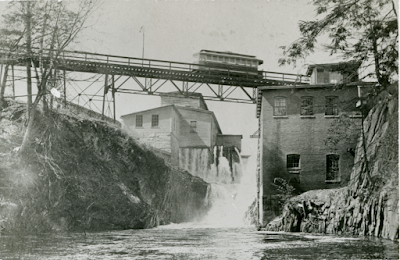
High trestle over the Messalonskee Stream, in Oakland, with one of the Duplex convertibles crossing at the Cascade Woolen Mill.
The new line required two bridges across Messalonskee Stream, one in Oakland and one off Western Avenue in Waterville. The railway and the city split the cost of the Waterville bridge, which Cummings said was 53 feet long and 28 feet wide.
The Waterville & Fairfield and Waterville & Oakland met in Waterville. Thence passengers could travel to Fairfield and connect for Benton or Shawmut.
By 1910, the Waterville & Fairfield tracks had been extended into the southern part of Waterville, out Grove Street to Pine Grove Cemetery and out Silver Street. There might have been a plan to connect the two lines at the foot of what is now Kennedy Memorial Drive; if so, it was never achieved.
The Waterville & Fairfield and Waterville & Oakland consolidated in 1911 under the auspices of Central Maine Power Company (which owned two other street railways in Maine). As of December of that year, Cummings wrote, the new Waterville, Fairfield & Oakland had 10.5 miles of track plus sidings.
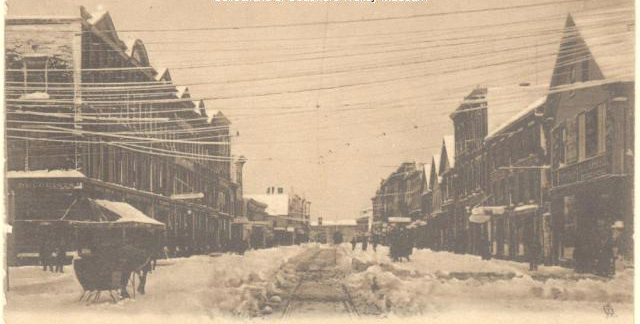
A postcard showing Main St., in Waterville, after an ice storm with iced lines and plowed Waterville, Fairfield & Oakland trolley tracks running the middle of the street, on March 10, 1906.
The line through Winslow and Vassalboro was eventually built by the Lewiston, Augusta & Waterville Street Railway. This company opened a railway from Winslow to East Vassalboro on June 27, 1908, and continued it from East Vassalboro to Augusta by November 1908.
The Lewiston and Waterville lines were connected by an arched concrete bridge across the Kennebec between Winslow and Waterville that opened Dec. 15, 1909, Cummings found. He wrote that after the 1936 flood took out the highway bridge, the trolley bridge was temporarily the only local way to cross the Kennebec (except by the footbridge).
The trolley bridge had survived its builders. The Lewiston, Augusta & Waterville became the Androscoggin & Kennebec in 1919 and stopped running July 31, 1932.
Cummings described in some detail routes, equipment, power sources and facilities. Fairfield’s two carhouses were on High Street (plus a smaller one on Main Street for the Fairfield & Shawmut); Benton had one, at Benton Falls; Waterville had one, at the Waterville Fairgrounds; and Oakland had elegant Messalonskee Hall, on Summer Street at the foot of Church Street near the lake. Cummings wrote that the Hall’s ground level accommodated three trolley tracks; the basement had a restaurant and a boathouse; and on the second floor were a dance hall and dining room.
The trolley fare remained a nickel until 1918, rose to seven cents that year and later to 10 cents, Cummings wrote; but regular riders could buy tickets in bulk and get a discount. Children rode for half price.
Schedules called for a trolley-car every half hour on each of the various routes. Cummings commented that as more and more automobiles and trucks competed for space on the streets, staying on schedule became increasingly challenging.
The Waterville, Fairfield & Oakland surrendered on Oct. 10, 1937. On its final day, passengers again filled the cars, as when the first electric cars ran more than 45 years earlier. Cummings wrote that the last trip over the Waterville to Oakland line began at 10:35 p.m. on Oct. 10; the last run to Fairfield began at 12:40 a.m. on Oct. 11. Bus service began at 5:15 that same morning.
Main sources
Cummings, O. R. , Toonervilles of Maine The Pine Tree State (1955)
Fairfield Historical Society Fairfield, Maine 1788-1988 (1988).
Websites, miscellaneous.
Fall foliage report: Peak conditions occurring in most of Maine
/0 Comments/in Central ME, Community/by Website Editor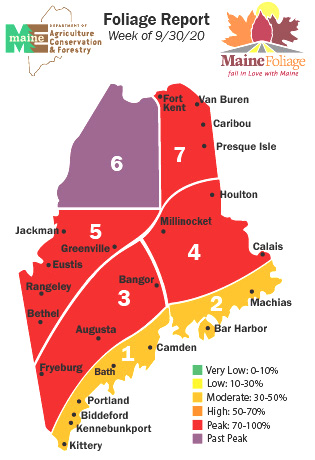 This week’s Fall Foliage Report from the Maine Department of Agriculture, Conservation & Forestry (DACF) reports peak and slightly beyond peak conditions for this upcoming weekend in northern, western, and central Maine. Coastal and southern regions are displaying moderate color changes (less than 50 percent color change).
This week’s Fall Foliage Report from the Maine Department of Agriculture, Conservation & Forestry (DACF) reports peak and slightly beyond peak conditions for this upcoming weekend in northern, western, and central Maine. Coastal and southern regions are displaying moderate color changes (less than 50 percent color change).
Typically, northern Maine (zones 6 and 7) reach peak conditions the last week of September into the first week of October. The rest of the state’s color progression will start from north to south in early to-mid-October.
“The lack of rain this summer and the early widespread frost jumpstarted the progression of foliage colors this season,” noted Gale Ross, DACF’s fall foliage coordinator. “Color is still emerging daily in portions of southern and coastal regions of Maine beyond this week and into October. But remember, it has been the shorter sunny days, followed by the cool nights of autumn that brought about the brilliant colors being displayed this week. It’s Mother Nature’s way of protecting and putting her trees to bed for the long winter months ahead.”
This weekend, take in the quickly progressing foliage from Sunday River’s Chondola scenic lift rides, or for coastal explorers, Camden Snow Bowl’s chairlift rides. Maine Craft Weekend, an annual statewide tour, will take place on October 3 and 4, with safety measures and changes to the typical weekend format. Check the website to learn about Maine-made crafts and support local artists and craftspeople.
For those looking for a fun virtual experience, the Maine Whoopie Pie Festival has been reimagined this year as a virtual event and a month-long ‘WHOOPtoberfest’ celebration.
For this week’s fall adventure, make your way to Maine’s Kennebec Valley for a relaxed leaf-peeping tour. Begin in Solon and wind your way to the Canadian border along the 78-mile Old Canada Road Scenic Byway. Pack a picnic for a stop at Robbins Hill for panoramic views of the valley, and don’t miss the Moxie Falls Scenic Area in The Forks, where you have the chance to enjoy the changing leaves on foot with a two-mile hike to the 92-foot vertical drop of the falls. Adventure seekers can still feel the thrill of whitewater rafting on the Kennebec River, a great way to experience fall foliage from the water for a few more weeks. And for leisure peepers, enjoy the fairytale-like trail system of Vaughan Woods in historic Hallowell.
During these unusual times, please be safe while exploring Maine this fall. For travel and visitor information as it relates to COVID-19, go to visitmaine.com/travel-with-care.
Autumn enthusiasts can visit the state’s official foliage website at www.mainefoliage.com to sign up to receive weekly reports by email and are encouraged to share foliage images from regions throughout Maine as the progression of color unfolds. Be sure to tag your pictures with @mainefoliage on Instagram and use #MaineFoliage. The Maine Foliage Facebook page also includes safe ways to enjoy fall this year. For more information about visiting Maine safely this fall, visit maine.gov/covid19.
Autumn enthusiasts can visit the state’s official foliage website at www.mainefoliage.com.
Efficiency Maine parking and pole lighting saves energy at outdoor locations
/0 Comments/in Community/by Website Editor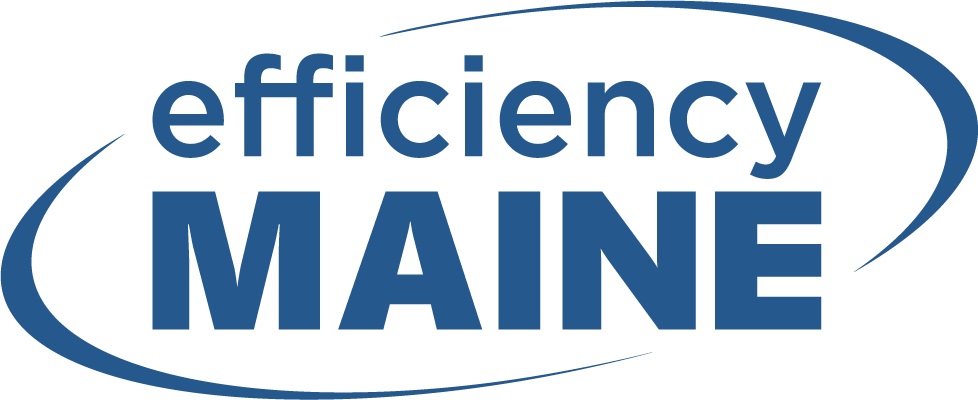 Maine businesses are improving the energy efficiency of their outdoor lighting using incentives from Efficiency Maine. So far, more than 30 projects in public and outdoor spaces are receiving funding through the Parking and Pole Lighting Retrofit Initiative. The initiative was inspired by a desire to provide job opportunities for electrical contractors and supply houses during the restrictions imposed by COVID-19 since many outdoor lighting projects could be completed with limited physical interaction between customers and contractors.
Maine businesses are improving the energy efficiency of their outdoor lighting using incentives from Efficiency Maine. So far, more than 30 projects in public and outdoor spaces are receiving funding through the Parking and Pole Lighting Retrofit Initiative. The initiative was inspired by a desire to provide job opportunities for electrical contractors and supply houses during the restrictions imposed by COVID-19 since many outdoor lighting projects could be completed with limited physical interaction between customers and contractors.
The goal of the initiative is to offer enhanced incentives to accelerate the conversion to efficient LED lighting in Maine’s public and outdoor places. For many businesses and organizations this was an opportunity to maximize energy savings, and reduce area glare and overlighting (which may benefit neighboring property owners). The limited-time offer opened on April 14, 2020, and has been extended to Sept. 30, 2020, to give more businesses time to participate. Interested businesses can get more information about the Parking and Pole Lighting Retrofit Funding Opportunity Notice (FON) at the Efficiency Maine website.
“We are keenly interested in supporting projects that will sustain jobs during the pandemic,” said Michael Stoddard, executive director of the Efficiency Maine Trust. “Upgrading lighting in outdoor spaces seems like a safe place to do that.”
Eligible lighting projects include building exterior-mounted lights, walkways, parking lots, and street lighting (not utility-pole-mounted fixtures).
The opportunity is one that John Daigle, owner of Old Orchard Beach Campground, couldn’t pass up. Daigle, whose family has owned the campgrounds for 46 years, already had a project under way to replace the recreational area’s pool, which needed lighting. His electrician suggested he bundle that upgrade with one to address the campground entrance and registration area. The new LED lights will result in an estimated savings of 8,594 kWh, or more than $1,200 in the first year.
“Our electrician has been working with us for more than 30 years,” Daigle explained. “He suggested we combine the two projects and apply for the Efficiency Maine incentives. The rebates really sealed the deal for me. We’re very pleased with the results. In many instances, people are arriving to the campground at night and this new, warmer lighting helps them see our entrance more easily from the road and keeps the area well lit for safety.”
“With these grants, businesses across Maine are upgrading their outdoor lighting, leading to lower energy usage and reduced costs,” said Dan Burgess, director of the Governor’s Energy Office. “This initiative further highlights how clean energy and energy efficiency can create jobs and stimulate Maine’s economy.”
Larger companies with several locations, such as Wendy’s, Hannaford, and LL Bean also are participating in the program. Wendy’s locations in Biddeford, Portland, Saco, Sanford, Scarborough, and Windham will upgrade exterior lighting that will save an estimated 150,000 kWh or more than $22,000 in the first year. Hannaford locations in Rumford, Madison, Waldoboro, and Houlton will see a more than 35,000 kWh and $5,300 combined estimated savings in the first year. And LL Bean’s Freeport and Brunswick locations will see a combined more than 185,000 kWh and $24,000 estimated first-year savings.
Efficiency Maine’s Commercial and Industrial Prescriptive Program, which funded the Parking and Pole Lighting Retrofit initiative, offers fixed incentives to reduce the cost of projects and to improve energy efficiency for businesses, municipalities, schools and higher education facilities, manufacturing and other industrial facilities, other non-residential facilities, and multifamily and condominium buildings with five or more units. Incentives for the initiative are calculated based on the amount of electricity saved by each project in the first year and are subject to a cap of 85% of the total project cost.
To learn more about the Efficiency Maine Prescriptive Program and how to maximize its benefits visit https://www.efficiencymaine.com/at-work/ci-prescriptive-incentive-program/.
Save money on your shipping costs
/0 Comments/in Community/by Website Editor (NAPSI)—Your company can get money from a surprising source: the Post Office.
(NAPSI)—Your company can get money from a surprising source: the Post Office.
That’s because the U.S. Postal Service now has a program that gives credits to registered businesses that use Click-N-Ship® services. As of August 1, 2020, businesses can earn these credits when they buy Priority Mail® and Priority Mail Express® products. The credits can then be used toward future purchases of the products, using Click-N-Ship.
How It Works.
- Registered business users of Click-N-Ship services will be automatically enrolled and automatically accrue the credits.
- Companies that are already registered get a $40 credit for every $500 spent on Priority Mail and Priority Mail Express products using Click-N-Ship.
- New Click-N-Ship users earn an additional $40 for the first $500 they spend.
- Once earned, credits are added to the connected USPS.com account within 30 days.
- Credits expire one year from the date of issuance.
Make Your Money Go Even Further.
More good news from the USPS: Starting January 2021, the Postal Service will help your business grow faster by adding tiers to the USPS® Loyalty Program. Your tier will be based on your qualifying shipping totals from the previous year. A higher tier means a larger benefit.
Learn More.
For further facts on how the USPS Loyalty Program can pay off for you, visit usps.com/loyalty.
GROWING YOUR BUSINESS: Finding a way
/0 Comments/in Growing Your Business/by Dan Beaulieu by Dan Beaulieu
by Dan Beaulieu
Business consultant
My mother always says there is a way, no matter what the challenge, no matter how steep the hill you have to climb, there is always a way. And that is pretty much what we all face in these dark times of COVID-19. We have to find a way to not only survive, but to keep our businesses growing.
As a business strategist, companies pay me to find ways for them to grow. Companies call me when they are having a hard time, they are stuck in a rut and are not growing, or worse yet, call me when they are on the severe slide towards bankruptcy. It’s not an easy job, but it is a challenging one to say the least. And, I am happy to say that most of the time I do manage to find a way to stop the slide and get them back on track. I’m very fortunate because I win more than I lose.
That kind of strategic thinking for the past 25 years has allowed me to hone my skills when it comes to helping companies and people when they are going through hard times.
So, obviously, as I sit in my home office, communicating with my customers via phone calls, emails and video conferencing, I have had a lot of time to think about what small local businesses here in Maine can do to make sure they survive during these times.
Recently I considered the dilemma of those people who own restaurants, businesses, that are focused on feeding people. What can they do to make sure they stay in business during this pandemic? I know that some have turned to take-out service, people ordering by phone, or on-line and either coming to pick up their orders curbside or getting home delivery. That is a great idea for sure, But, then what can these restaurants do to be truly outstanding at this?
Here are several ideas for being outstanding at your restaurant’s take out service:
- Design your menu to offer the best take out on the market. Upscale your take-out menu and offer your favorites…what your restaurant is known for. Exceed the offerings of traditional take out fare.
- Offer detailed prep instructions. If you are known as a great steak house for example, tell people how to prepare the food once they get it home. How do they warm the meat and potatoes, so they are as good as when you are sitting in their restaurants?
- Offer a complete family-style sit down dinner, for four, or five or six.
- Create special offers. Do some merchandizing that will appeal to customers. A special Sunday night family pizza package at a great price. Or a make Friday night Mexican night! Or like in the old Prince commercials, make Wednesday spaghetti day. And make sure you offer these at a great price.
- Get the word out. We have social media. Start a Facebook page, use Twitter and especially Instagram, or better yet place a weekly menu ad in this fine weekly newspaper. Or go old school and pass out flyers. Just make sure you get the word out to your market so that people will know where you are, what you are offering and what great savings it will be.
Look, these are just five simple ideas, and I am sure some of you are already doing some of these if not all of them. But the point is, if you think about you, you are the expert of your own restaurant and if you get creative and innovative you too can come up with even better ideas to make sure you keep growing your business even in these, the most difficult of times.
Interesting links
Here are some interesting links for you! Enjoy your stay :)Site Map
- Issue for May 2, 2024
- Issue for April 25, 2024
- Issue for April 18, 2024
- Issue for April 11, 2024
- Issue for April 4, 2024
- Issue for March 28, 2024
- Issue for March 21, 2024
- Issue for March 14, 2024
- Issue for March 7, 2024
- Issue for February 29, 2024
- Issue for February 22, 2024
- Issue for February 15, 2024
- Issue for February 8, 2024
- Issue for February 1, 2024
- Issue for January 25, 2024
- Issue for January 18, 2024
- Issue for January 11, 2024
- Issue for January 4, 2024
- Issue for December 21, 2023
- Issue for December 14, 2023
- Issue for December 7, 2023
- Sections
- Our Town’s Services
- Classifieds
- About Us
- Original Columnists
- Community Commentary
- The Best View
- Eric’s Tech Talk
- The Frugal Mainer
- Garden Works
- Give Us Your Best Shot!
- Growing Your Business
- INside the OUTside
- I’m Just Curious
- Maine Memories
- Mary Grow’s community reporting
- Messing About in the Maine Woods
- The Money Minute
- Pages in Time
- Review Potpourri
- Scores & Outdoors
- Small Space Gardening
- Student Writers’ Program
- Solon & Beyond
- Tim’s Tunes
- Veterans Corner
- Donate




